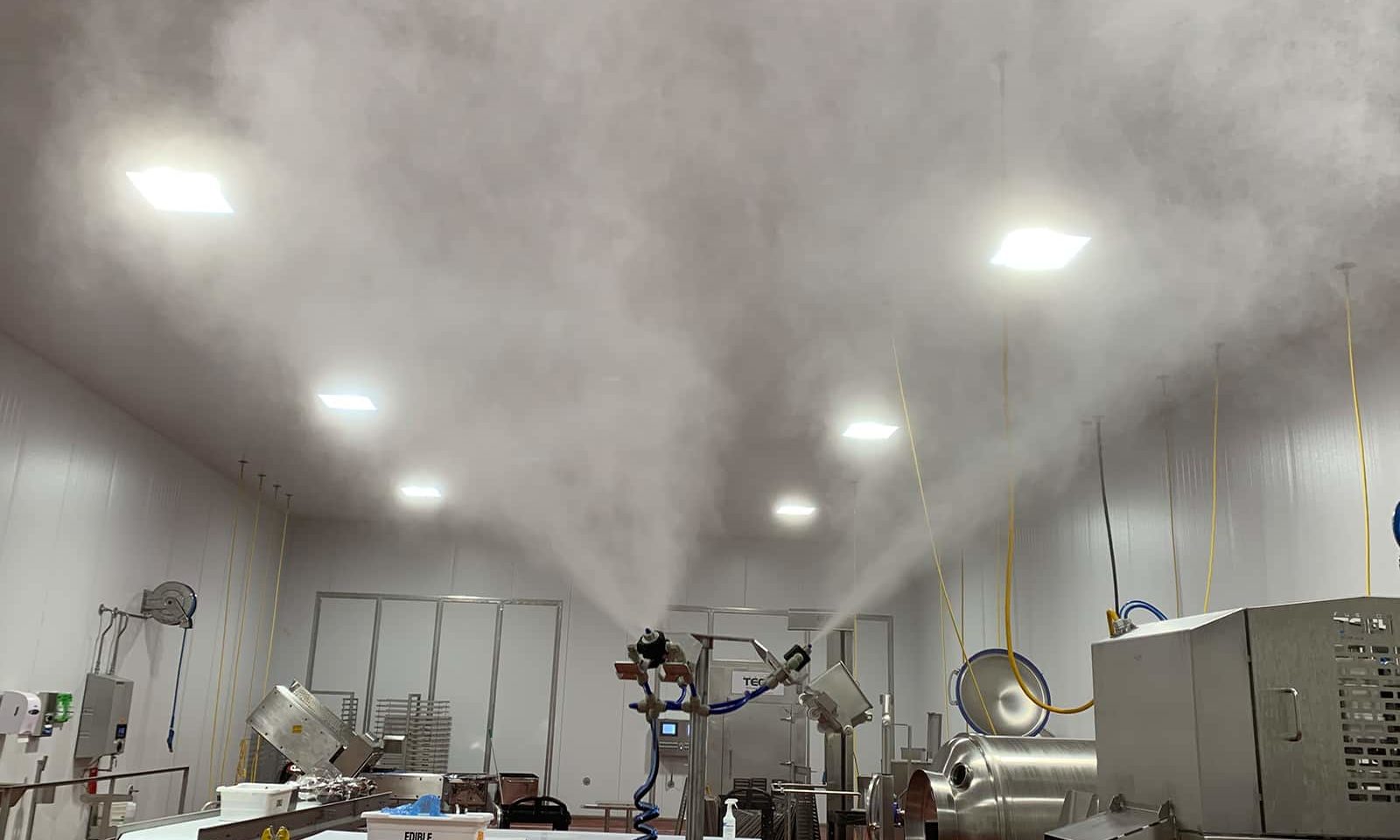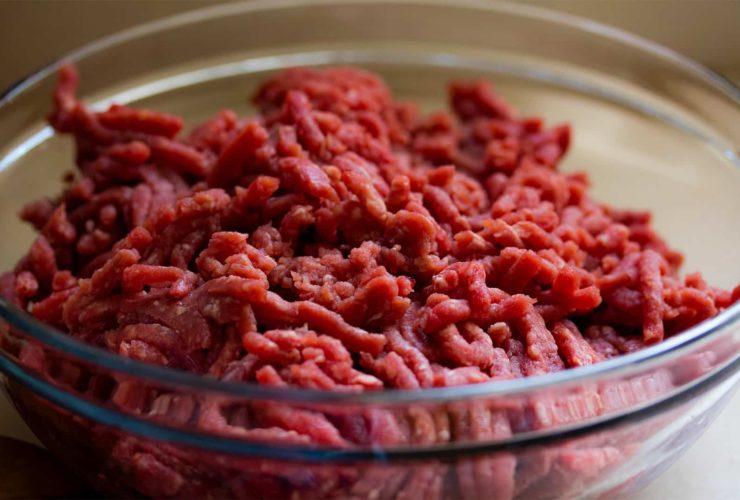The spread of COVID-19 has left many food processors trying to find fast and efficient ways to disinfect their facilities.
Wiping down every surface by hand with a CDC and EPA-approved disinfectant is extremely costly, both in purchasing chemicals and in redirecting the labor force to spend time cleaning.
To combat those costs, many food processors have turned to the process of sanitation fogging to apply disinfectants in a large area.
What is Sanitation Fogging?
Simply put, sanitation fogging is the process of applying chemical disinfectants to a production area in the form of a fog or mist that fills the entire room.
This can be achieved using a static, built-in system with strategically placed nozzles or, as is more commonly used, a mobile fogging unit that supersaturates the atmosphere with a disinfectant fog that fills the entire room.
Depending on the system you use and the size of the room, fogging takes a minimum of 15-30 minutes to disperse the disinfectant. Afterward, an additional 45-60 minutes is required to allow the droplets to settle out of the air and onto the surfaces.
This method does two things:
- Reduces the number of airborne micro-organisms
- Applies disinfectant to hard-to-reach surfaces
An additional hand-held fogging wand can be used to disinfect smaller areas or even harder-to-reach surfaces to ensure an effective covering.
When to Fog
Fogging is considered a disinfecting process and should be applied after a thorough and regular cleaning process has taken place.
According to the CDC:
Cleaning removes germs, dirt, and impurities from surfaces and objects. It works by using soap (or detergent) and water to physically remove germs from surfaces. This process does not necessarily kill germs, but by removing them, it lowers their numbers and the risk of spreading infection.
Disinfecting kills germs on surfaces or objects. Disinfecting works by using chemicals to kill germs on surfaces or objects. This process does not necessarily clean dirty surfaces or remove germs, but by killing germs on a surface after cleaning, it can further lower the risk of spreading infection.
Sanitizing lowers the number of germs on surfaces or objects to a safe level, as judged by public health standards or requirements. This process works by either cleaning or disinfecting surfaces or objects to lower the risk of spreading infection.
Follow your regular cleaning procedures to remove germs and food particles from your equipment, let it dry, then use a mobile fogger to apply disinfectant throughout your room.
This will ensure your equipment is clean of food bacteria and clean of airborne viruses, such as COVID-19.
Approved Disinfectants
The fogging process is only as effective as the chemicals you use.
The CDC recommends using EPA-registered “List N” disinfectants, which are found to be the most effective for eradicating the SARS Co-V-2 virus.
All of the disinfectants on List N are believed to kill COVID-19 because they:
- Demonstrate efficacy (e.g. effectiveness) against a harder-to-kill virus; or
- Demonstrate efficacy against another type of human coronavirus similar to SARS-CoV-2.
Because COVID-19 is a new virus, this pathogen is not readily available for use in commercial laboratory testing to see if a certain disinfectant product is effective at killing the virus.
Understand though, no disinfectant will be effective unless the surface is first cleaned with water and soap or detergent.
You also need to pay attention to the specific length of contact time. Every EPA-registered disinfectant requires a contact time in which the surface must remain wet with the disinfectant in order for it to be effective.
Should You Use Sanitation Fogging?
The short answer is an emphatic YES!
COVID-19 is a persistent virus that has proven to be hard to kill. Cleaning and disinfecting surfaces that are frequently touched is still one of the best ways to prevent the spread of the disease.
Fogging allows you to quickly and easily apply disinfecting chemicals to every surface in a large room — giving you the benefit of ensuring every surface is effectively covered while reducing the labor and chemical expenses needed to disinfect by hand.
Reduce the risk of COVID-19 spreading throughout your plant. Start using a mobile fogger to disinfect your facility!




